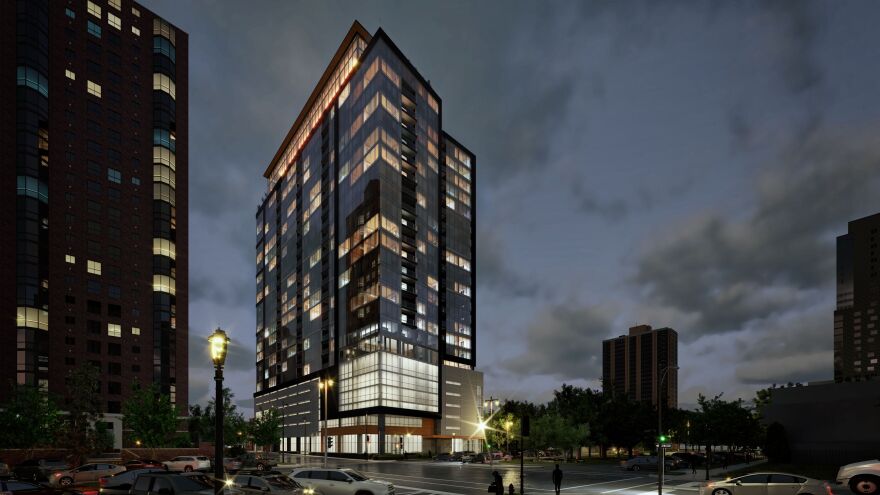Imagine a skyscraper constructed not from steel and concrete, but instead made mostly of wood. Milwaukee, Wisconsin is on track to achieve just that — the world’s tallest timber skyscraper.
It was hard to imagine any kind of tower on this nondescript construction site, formerly home to a corner pizzeria in downtown Milwaukee.
Architect Jason Korb designed the 25-story building that will stretch to the sky. "They have to drive these pile foundations down up to 165 feet and you can see they are starting to weld several pieces of deep foundation together," he explains.

Developer Tim Gokhman says while steel and concrete do factor into the project, its focal point is a warehouse full of timber manufactured specifically for this project. "They’re actually fairly standard pieces of dimensional lumber," he says.
Softwood species, like Douglas fir and southern yellow pine, are harvested, milled and groomed for what’s called dimensional stability. "They’re being glued, pressed together in a factory and because it’s being done by machine it is infinitely more precise," Gokhman explains.

Mass timber first got noticed in the U.S. and Canada about six years ago, particularly in the Pacific Northwest. But Austria has been fabricating it for tall buildings for nearly 30 years.
What’s special about the Milwaukee project is its height. When the high-end apartment complex opens in 2022, it will top the height of the world’s tallest wood structure that’s now in Norway.
Tim Gokhman’s enthusiasm for the material is helping Brian Brashaw. He’s with the U.S. Forest Service and is on a mission to cultivate mass timber markets around the country.
"We are seeing incredibly innovative projects like Ascent that are pushing the envelope, they’re creating this opportunity," Brashaw says.

Brashaw says innovative structures spark advances in mass timber technology, which in turn helps with forest planning. "It gives us the ability to manage lands that are in need of forest management." Brashaw adds, "And many forests are really economic drivers for rural communities."
Daniel Safarik is with the Council on Tall Buildings and Urban Habitat. He sees mass timber construction as key to housing the world’s ever more urban population.
"We’re going to have to be thinking about how do we build sustainably, and to have a material that could allow us to build in a high density safely and which locks up carbon seems like a win, win, win," he says.
Trees sequester carbon dioxide and the wood holds it captive — even when made into lumber and used to create a skyscraper.




